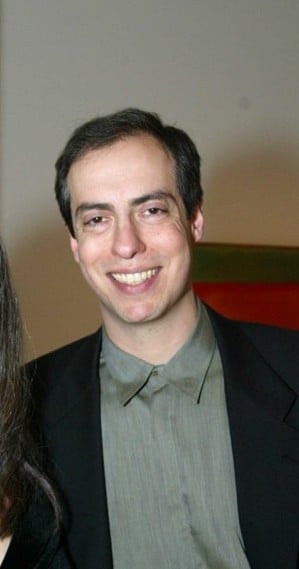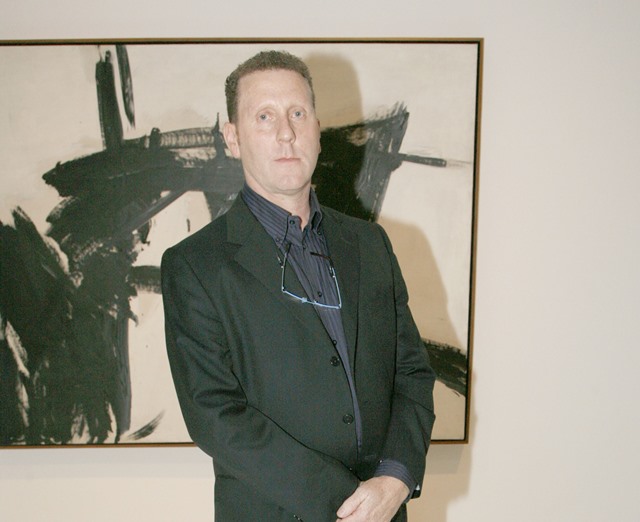Galleries
Mark Rothko’s Son Denies Authenticating Paintings at Knoedler Fraud Trial
Rothko expert David Anfam called Freedman's claims to buyers "outrageous."

Rothko expert David Anfam called Freedman's claims to buyers "outrageous."

Brian Boucher

When Christopher Rothko, Mark Rothko’s son, took the stand Monday at the United States District Court in Manhattan to testify in the fraud trial concerning Knoedler & Co., he was presented with a document that claimed he had “recognized” a painting as a work by his father. It was a document that the gallery had used to convince potential buyers of the work’s authenticity. Rothko dismissed the document, saying that he never authenticates works of art.
Rothko, along with art historian David Anfam (who authored the Mark Rothko catalogue raisonné) and plaintiff Eleanore De Sole, were the three witnesses who took the stand Monday in the trial in the lawsuit brought by Domenico De Sole and his wife Eleanore against Knoedler & Company and its former director and president Ann Freedman for selling them a fake work of art purportedly by Mark Rothko.
The suit is the only one to come to trial in an array of fraud lawsuits brought over a trove of artworks by Abstract Expressionists that the gallery sold after buying them from the Long Island dealer Glafira Rosales. They had supposedly come from the son of a secretive Swiss collector. The gallery has settled out of court with other defrauded buyers.
While Rothko did concede to having described an alleged work by Mark Rothko that the gallery was offering as “beautiful,” he said that he described it that way because “I didn’t want to go further than that because I didn’t want to be sitting here today.” The courtroom erupted in laughter.
As other witnesses have done, Rothko insisted that he had never given the gallery his permission to indicate that he had authenticated the work, and that he had never discussed its authenticity with Freedman.
Other memos by the gallery claimed that Christopher Rothko had “expressed a debt of gratitude” to the gallery over its research, and that he was so impressed with a supposed painting by his father that he had recommended it for an exhibition catalogue. Rothko denied making either statement.

David Anfam.
Photo: Patrick McMullan.
Lawyers for the defendants pointed out that the Rothko heirs had given their permission for one of the supposed Rothkos to be included in a calendar under their copyright. They also referred to a letter Christopher Rothko had sent to Freedman, conceding that catalogues raisonné are not necessarily complete, and that other works by an artist can later come to light.
Anfam, for his part, showed indignation on the stand when describing what seemed to be Freedman’s efforts to exploit his expertise without his permission.
A foremost expert on the artist, Anfam authored a catalogue raisonné of Rothko’s paintings in 1998. Gallery documents showed that Anfam had endorsed the work as genuine; he testified that he had never even seen it in person.
As per a document discussed in court, the gallery allegedly told buyers that the Rothko sold to the De Sole’s was to appear in a subsequent catalogue to be authored by Anfam, and that another work, which was sold to Michelle Rosenfeld Gallery for $325,000, was slated for inclusion in an Anfam catalogue of works on paper.
“It’s outrageous,” Anfam said, pointing out that no such catalogues were ever in the works.
Anfam further pointed out that had he known the whole backstory of the works Freedman was offering, he would have doubted their authenticity. Had he known that Rosales was supposedly selling as many as thirty Abstract Expressionist paintings, he said, “it would have rung alarm bells.”
On cross-examination, Anfam did allow that he had recommended a Barnett Newman painting from Knoedler to be acquired by the Albright-Knox Art Gallery, in Buffalo, N.Y., and that he had included it in a show he organized. He also requested some honorarium for lobbying the museum to acquire the canvas.
He maintained that he had not been made aware that IFAR had declined to authenticate one of the Rosales works. Had he known, he testified, “It would have brought an element of doubt into the whole affair.”
Anfam also related a conversation with Freedman from late 2011, after the fraud accusations had appeared in the press. Freedman tried to get him to endorse a fragment of a Clyfford Still painting from the Rosales trove for inclusion in the collection of the Clyfford Still Museum, in Denver, Colorado, where Anfam is senior consulting curator. (The painting had been burned in a vehicle fire in transit, Freedman told Anfam.) This would have constituted a proxy authentication of the work, Anfam said.
Describing his incredulous reaction, he said, “I don’t know if you have a similar expression in America: ‘It’s a bit rich.’”
Earlier in the day, Eleanore De Sole had completed her testimony.
Testimony continues on Tuesday.